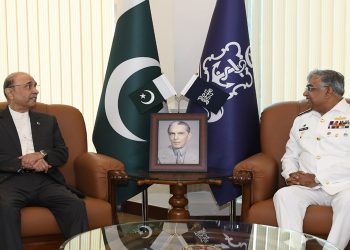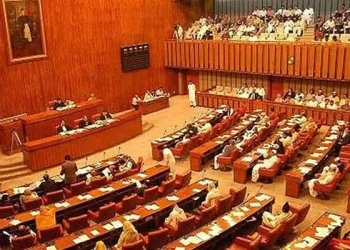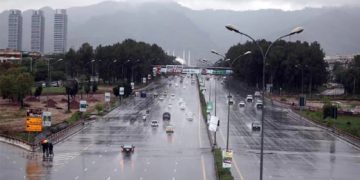The pillars of the state in Pakistan, such as the Election Commission, play a crucial role in deciding matters like whether the symbol of the PTI should be taken away, leading to the Peshawar High Court declaring it null and void.
On the other hand, it is noteworthy in the context of the recent decision by the Supreme Court that, under the decision, former Foreign Minister Shah Mahmood Qureshi was granted parole, but he was prevented from traveling, according to previous practices.
Shah Mahmood Qureshi was once again arrested, indicating that the police preferred to uphold the order under the supervision of the Thri-MPO, which is another puzzle.
The intra-party election of the PTI was also not without its puzzles, where key positions, including the Chairman, were elected without competition, and objections were raised by Akbar Ais Babar that the intra-party election was completely biased.
However, seizing the electoral symbol from the PTI a month before the general elections is not a decision that can be easily understood by experts. If we talk about past instances, the speed of decision-making was never seen as fast as it is today.
The saying “every day’s coming and going diminishes value” holds true in this continuous flow of decisions from all sides, causing decisions of institutions like the judiciary and the Election Commission to lose their impact. The police has mostly left the implementation of decisions to their discretion.
The recent decision of the Peshawar High Court on the intra-party election became news that the Election Commission has been directed to hold an important meeting to prepare legal points, instructing Wong to prepare the Election Commission for the decision.
Looking at the decision of the Peshawar High Court, it is mentioned that general elections are scheduled for February 8, and election symbols will be allotted on January 13. On this occasion, a political party was deprived of the electoral symbol, and the decision of the Election Commission was stalled.
In the judicial decision, the Peshawar High Court also directed the Election Commission to publish the certificate of the PTI intra-party election on the website and restore the symbol for Tehreek-e-Insaf. A date for further hearing was set for January 9.
Interestingly, every political analyst in the country knows well which way the winds are blowing. Everyone knows who wants to align themselves with Imran Khan’s power after his departure. However, the Peshawar High Court’s decision in favor of PTI creates a situation like a plot twist, which may deceive an ordinary person for some time but not individuals with analytical and knowledgeable backgrounds.
The election, which could have removed Imran Khan from power within 90 days, did not happen for some reason. Whether it’s the minus-one formula or something else, only time will tell, and until then, the tug-of-war and intrigues between institutions will likely continue.
Mutual tensions and conflicts between institutions undoubtedly create confusion, corruption, and chaos, leading to simultaneous progress and setbacks in different directions in the country, as can be observed to some extent in Pakistan.










![This handout photo released by the IRGC’s official Sepah News Telegram channel shows smoke billowing from a site bombed by Israel in Tehran early on June 13, 2025 [Sepah News/AFP]](https://mmnews.tv/wp-content/uploads/2025/06/Israel-attack-on-Iran-1-350x250.jpg)
















